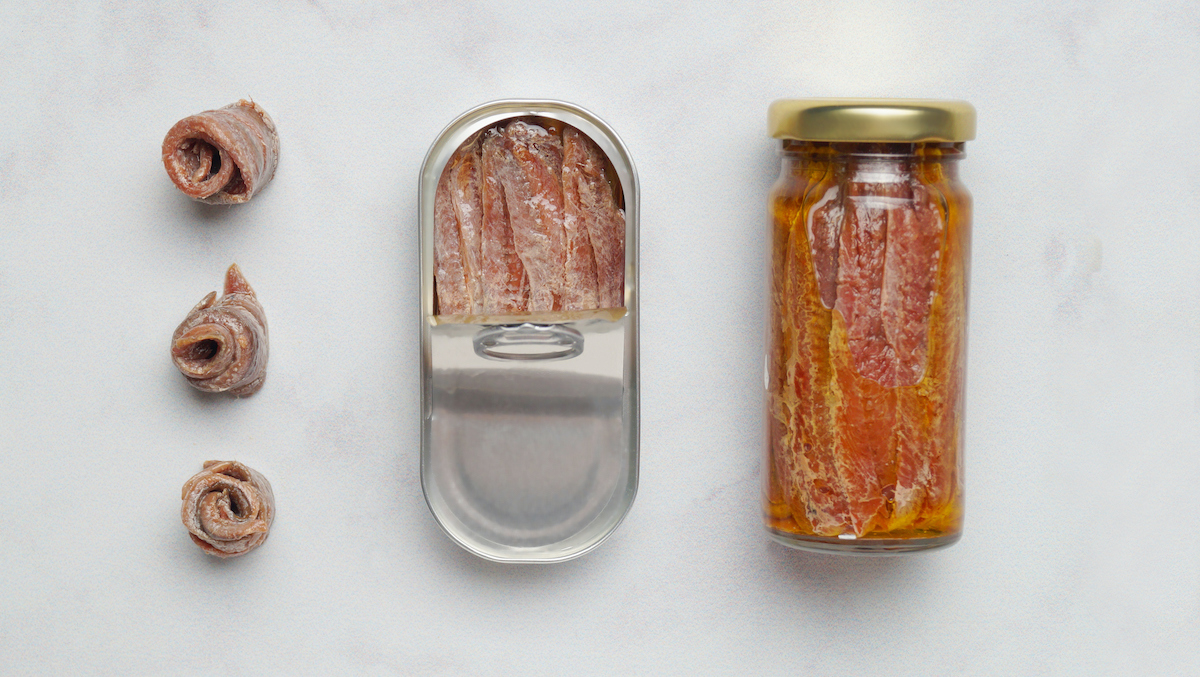There are, at this moment, thousands of little anchovies hiding from the sun.
They are curled up inside tin-lined sanctuaries somewhere in southeastern Pennsylvania, not unlike how I curl up next to the air conditioner when it’s over 90 degrees. They are aging — gracefully, one hopes — but these anchovies are not for sale. Not right now. Not until it’s cooler.
Earlier this week, Rainbow Tomatoes Garden, a family-run specialty store that claims the world’s largest selection of tinned fish, announced a seasonal shipping pause on one of their most beloved offerings: salt-cured anchovy fillets. The shop posted a note to Instagram alerting customers: “ANCHOVY SUMMER SHIPPING PAUSE! All salt-cured anchovies are now marked out of stock until we’re back to cooler temps.”
It seems the heat wave has come for fancy tinned fish.
Salt-cured anchovies are what’s known in the business as semi-preserved—a term that suggests both refinement and faint doom. Unlike their sterilized, shelf-stable cousins (think sardines, smoked mussels or your trusty tin of mackerel), these anchovy fillets live somewhere in the twilight between fresh and forever. They are stable-ish, but only if treated with the delicacy of a fine Burgundy.
“They need to be stored cool,” Dan Waber, Rainbow Tomatoes Garden’s owner, told me after I reached out upon seeing his Instagram post. “As a fine wine might be.”
This is not metaphor.
“They do not require full refrigeration at all times,” he said. “Most people store them in the refrigerator — we do here — because it’s more convenient than having an ‘anchovy cellar’ set up, and storing them at the lower temperatures of a refrigerator doesn’t harm them at all. But it is strictly speaking not necessary.”
We need your help to stay independent
Waber, who speaks of tinned fish with the reverence of a poet and the precision of a scientist, explained the whole process to me: the layering of fish and salt in barrels; the months-long aging; the oil-packing, the sealing, the — crucially — non-sterilization. These anchovies are alive, in a way. Not literally, of course. But they are continuing to break down. The warmer it is, the faster the breakdown. Given enough heat, what was once a rich, velvety fillet becomes anchovy paste.
You can imagine the implications of USPS losing a box on a heat-blasted route through Memphis.
“It would be absurd to keep going back and forth with the whims of the weather,” Waber said. And so they don’t. When it gets too hot, they simply remove the fillets from their online store. Not all companies do this. Some use chill packs and thermal wrappings and hope for the best. Rainbow Tomatoes Garden does not. “We find that overly wasteful,” Waber said. “So we are simply mindful.”
Most of their stock — whole anchovies, shirasu, the usual sardine-squad—is unaffected. But for the prized fillets, they wait.
What’s wild is that this small pause, this moment of corporate mindfulness, reads like an act of rebellion in a world determined to ship everything now, everywhere, regardless of context. There is something weirdly beautiful about a company saying: No. These anchovies are special. These anchovies are not for heatwave travel. You’ll just have to wait.
Shipping pauses like this might become the new normal as summers stretch hotter, longer and weirder — thanks to climate change.
But if you’d like, you can even sign up for a notification. One that will email you when, someday soon, it is anchovy season once again.


